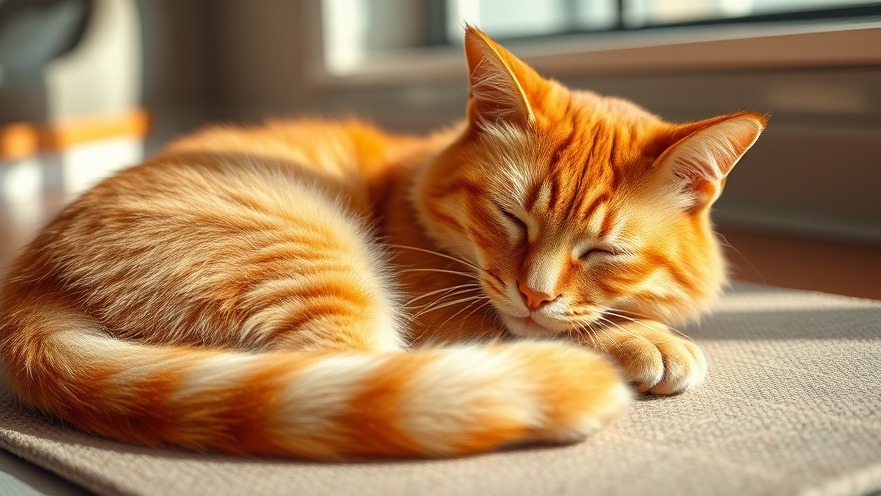
Understanding Feline Behavior: Why Cats Sleep on Their Left Side
For many cat owners, it’s a curious observation that our feline friends prefer to curl up on their left side while drifting into their multi-hour slumbers. Recent research from an international team of experts reveals that this preference may be more than just a quirky habit; it could be tied to evolution and survival. In this article, we’ll delve into the fascinating rationale behind this behavior, how it links to their innate instincts, and what implications it has on our understanding of these beloved pets.
Cats and Their Unique Sleep Habits
Cats are known to be highly sensitive creatures, spending up to 16 hours a day sleeping. While they prefer elevated surfaces that protect them from potential predators, the choice of sleeping position can also yield critical survival benefits. Researchers examined 408 videos of cats sleeping and found that approximately two-thirds of them selected the left side. This inclination might be wired into their brains, optimizing their readiness to react upon awakening.
The Science Behind Left-Side Sleeping
But why the left side? According to the research team, led by Dr. Sevim Isparta of the University of Bari Aldo Moro, sleeping on the left facilitates quicker responses to potential threats. When a cat sleeps on its left side, the visual information it processes upon waking travels directly to the right hemisphere of its brain, which is responsible for spatial awareness and detecting dangers. The research proposes that this behavior showcases an evolutionary adaptation, emphasizing a cat’s innate survival skills.
Cultural Connections: Cats in Our Lives
As we consider the lives of cats in urban spaces, such as Dallas, where many enjoy a multicultural lifestyle, it becomes clear that environmental factors influence not just a cat’s habitat but their behaviors too. For instance, the abundance of tall buildings and secure outdoor areas can lead to variations in their sleeping habits. Urban and suburban living impacts how and where pets find safety and comfort. Understanding these dynamics adds another layer to how we interpret animal behavior and companionship.
Decoding the Left-Side Preference in Context
While the notion of left-side sleeping appears fascinating, it also raises broader questions about how we relate to our pets and the environments in which we coexist. The significance of this preference might reflect not only an evolutionary worldview but also the adaptive skills that animals showcase in their efforts to thrive within human-dominated settings. Observational practices, such as those seen in the videos analyzed for this research, extend our understanding of pet behaviors and challenge the typical conventions of pet care.
The Broader Impact on Veterinary Science and Behavior Studies
Moreover, insights gleaned from this research could influence veterinary practices. By understanding natural behaviors better, animal care professionals can improve ways of creating safe environments that align with species-specific habits. This approach can also be valuable in fields such as animal training and domestication strategies, where comprehension of behavioral patterns directly leads to better health and well-being for pets.
A Closer Look: Educational Tools and Resources
As awareness around this topic grows, the importance of educational resources increases. Animal behaviorists and veterinarians can draw on studies like these to inform their practices. For pet owners, understanding sleep positions and their implications ensures better care practices and deeper insights into their animals’ needs, promoting a fulfilling relationship.
Conclusion: Insights Beyond the Cat Nap
Understanding why cats sleep on their left side opens a window into the intersection of behavior, survival, and the human-animal bond. This research not only enriches our understanding of feline friends but also serves as a conversation starter about the complexities of urban pet life, particularly in diverse environments like Dallas. As we nurture our relationships with these instinctual animals, it is crucial to consider their lifestyle choices and environments.
For those exploring deeper aspects of feline behavior, consider exploring various resources on effective pet care and behavior studies. Connect more with your pets and delve into their world.
 Add Element
Add Element  Add Row
Add Row 



Write A Comment